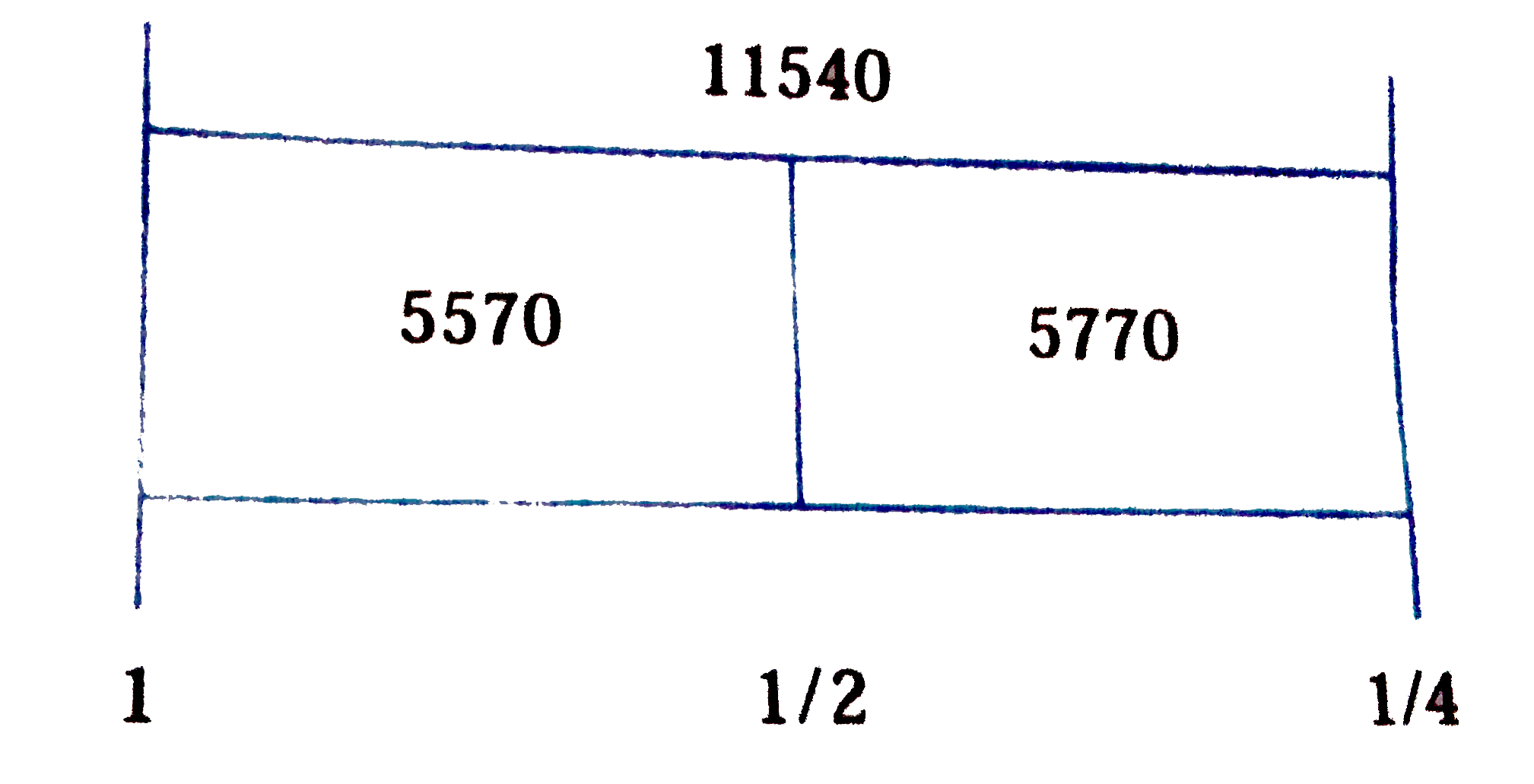Radioactive decay is a first− order process. Radioactive carbon in wood sample decays with a half− life of 5770 years. What is the rate constant ( in years ) for the decay ? What fraction would remains after 11540 years ?
Radioactive decay is a first order process. Radioactive carboon in wood sample dcays with a half life period 5770 year. What is the rate of constant (in years) for the decay? What fraction would remain after 11540 years.

Topper's Solved these Questions
- BOOK - NARAYNACHAPTER - NUCLEAR CHEMISTRYEXERCISE - NCERT BASED39videos
NUCLEAR CHEMISTRY
- BOOK - NARAYNACHAPTER - NUCLEAR CHEMISTRYEXERCISE - COMREHENSION29videos
NUCLEAR CHEMISTRY
- BOOK - NARAYNACHAPTER - METTALURGYEXERCISE - Statement Typer Question2videos
METTALURGY
- BOOK - NARAYNACHAPTER - ORGANIC COMPOUNDS CONTAINING NITROGENEXERCISE - EXERCISE-430videos
ORGANIC COMPOUNDS CONTAINING NITROGEN
Similar Questions
Which of the following isotopes is likely to be most stable?
02:24View SolutionSeveral short-lived radioactive species have been used to determine the age of wood or animal fossils. One of the most intresting substance is 6C14(half-life fossils, etc.). Carbon-14 is produced by the bombardment of nitrogen atoms present in the upper atmosphere with neutrons (from cosmic rays).
7N14+0n1→6C14+1H1
Thus carbon-14 is oxidised, to CO2 and eventually lingested by land animals. The death of plants or animals put an end to the intake of C14 from the atmosphere. After this the amount of C14 in the dead tissues starts decreasing due to its disintegration as per the following reaction :
6C14→7N14+−1β0
The C14 isotope enters the biosphjere when carbon dioxide is taken up in plant photosynthesis. Plants are eaten by animals, which exhale C14 as CO2. Eventually, C14 participates in many aspects of carbon cycle. The C14 lost by radioactive decay-replenishment process, a dynamic rquillibrium is established whereby the ratio of C14 to C12 remains constant in living matter. But when an individual plant or an animal dies, the C14 isotpe inn it is no longer replenished, so the ratio decreases as C14 decays. So, ther number C14 nuclei after time t (after the death of living matter) would be less than in a livingthe following formula, t1/2=0.693/?
The intensity of the cosmic rays have remain the same for 30,000 years. But since some years changes in this are observed due to excessive burning of fossil fuel and nuclear test?
Why do we use the carbon dating to calculate the age of the fossil?02:42View SolutionMetals of high purity are obtained by zone refining.
Impurities are more soluble in melt in pure metal.00:46View SolutionThe final products is the following sequenceof reaction is
 01:21View Solution
01:21View SolutionThe half-lives of radioactive sample are 30 years and 60 years for two decay processes. If the sample decays by both the processes simultaneously. The time after which, only one-fourth of the sample will remain is
01:23View SolutionRadioactive decay is a first− order process. Radioactive carbon in wood sample decays with a half− life of 5770 years. What is the rate constant ( in years ) for the decay ? What fraction would remains after 11540 years ?
01:07View SolutionThe half line of a radioactive element is 2n year. The fraction decayed in n year.
01:35View SolutionRadio active carbon-14, in a wood sample decays with a half life of 5700 years. The fraction of the radio active carbon -14, that remains after a decay period of 17,100 year is
03:44View SolutionThe half life period of a radioactive substance is 10 year. The amount of the substance decayed after 40 years would be
02:35View Solutionकिसी रेडियोएक्टिव पदार्थ की अर्द्ध - आयु 8 वर्ष है । इसके क्षय - नियतांक क्या है ?
02:05View Solutionकिसी रेडियोएक्टिव पदार्थ की अर्द्ध - आयु 8 वर्ष है । इसके क्षय - नियतांक क्या है ?
View Solutionरेडियोऐक्टिव विघटन एक प्रथम कोटि की प्रक्रिया है। एक लकड़ी के नमूने में उपस्थित रेडियोएक्टिव कार्बन 5770 वर्ष की अर्द्ध आयु के साथ विघटित होता है। विघटन के लिए वेग स्थिरांक (वर्ष−1) क्या होगा? 11540 वर्ष के बाद कितना भाग शेष बचेगा?
01:53View SolutionThe decay constant, for a given radioactive sample is 0.3465day. What percentage of this sample will get decayed in a period of 4 years?
02:42View SolutionThe half-life of a radioactive model is 5 years. Probability of decay in 10 years
02:42View SolutionThe half life of a radioactive substance is 13 years. The decay constant is
03:19View SolutionThe half-lives of radioactive sample are 30 years and 60 years for two decay processes. If the sample decays by both the processes simultaneously. The time after which, only one-fourth of the sample will remain is
01:20View Solution

